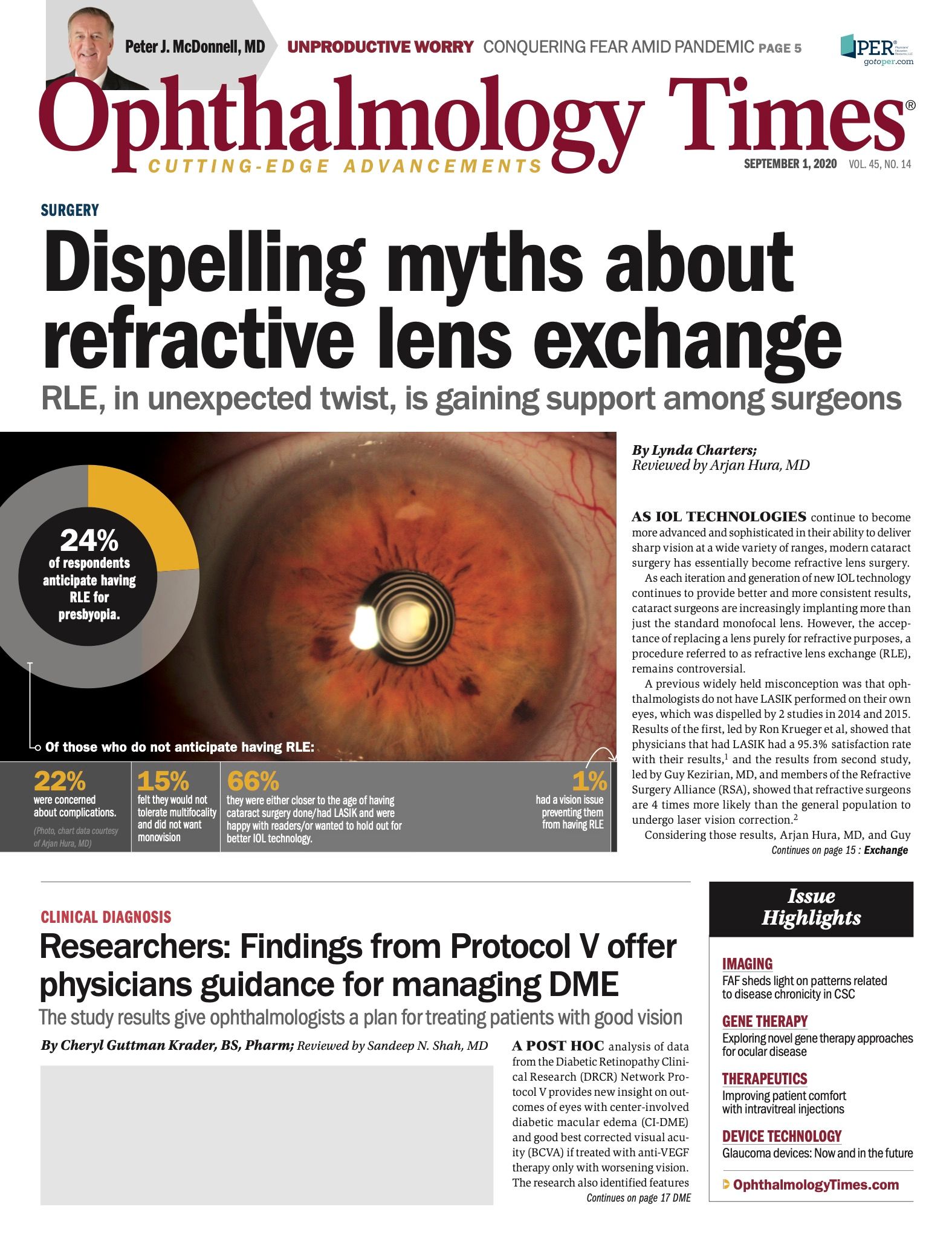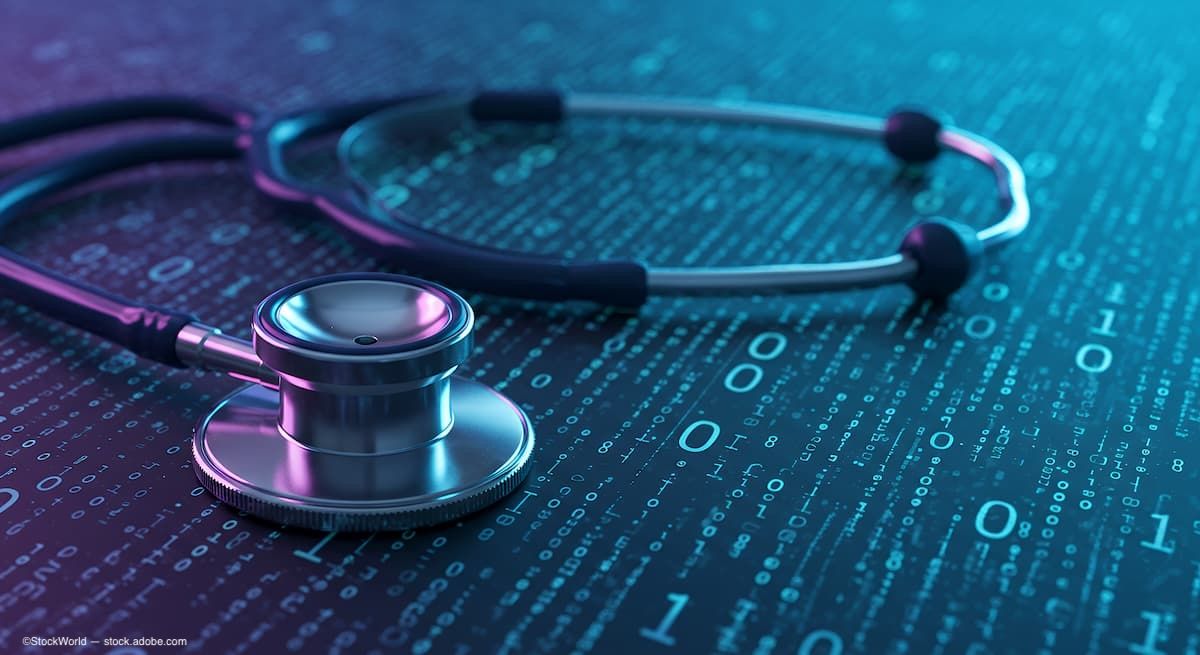Publication
Article
Digital Edition
Astigmatism management software proving to be accurate, precise
Author(s):
Newly cleared technology for laser cataract gives ophthalmologists another tool.


Special to Ophthalmology Times®
In a validation study of the software’s algorithm, investigators reported that the iris registration from preoperative keratometry and steep axis values measurement enables identification of the patient’s steep axis within 2 degrees of actual cyclorotation in the Catalys user interface in 94% of eyes.
Related: Big data drives opportunity for real-world evidence
Used to make relaxing incisions or corneal marks for toric IOLs, the astigmatism management function saves time and allows for a more efficient workflow, according to the findings.
It is known that astigmatism reduces distance and near visual acuity, vision quality, and depth perception.1,2
It has been shown that 38% of US patients with cataracts have astigmatism (≥ 1.00 D).3
Due in part to limitations in the currently available diagnostic and surgical methods for the surgical correction of astigmatism, it often goes undercorrected or uncorrected.
Related: Astigmatism: A ‘clear-as-mud’ concept to patients
Validation study
To assess the accuracy of the femtosecond laser artificial intelligence (AI) algorithm for measuring cyclotorsion in cataract surgery, Douglas D. Koch, MD, and colleagues compared an initial set of data with the reference, or truth, then applied the AI methodology. 2
Koch, professor and the Allen, Mosbacher, and Law Chairman in Ophthalmology, Cullen Eye Institute, Baylor College of Medicine, Houston, presented the results of this investigation during the American Society of Cataract and Refractive Surgery 2020 virtual annual meeting.
The team used a set of 52 eyes to refine and develop the software, then validated the algorithm with a set of 49 eyes.
Preoperative images and data from undilated eyes were measured by the Cassini and matched with images of dilated eyes captured when docked to the Catalys.
Related: Teaching AI algorithms to identify corneal pathology: The future is now
The goal was to register at least 90% of images and achieve an accuracy within 2 degrees, Koch said.
“For the development set, 3 human graders manually graded the Cassini and Catalys images to define true cyclorotation,” he noted. “This set had to have a standard deviation of <2.5 degrees to be included, and for docking, the eye was centered ±2.3 mm within the liquid optics interface of the suction ring.”
The system’s iris registration software automatically compensates for cyclorotation, displaying on the screen the amount of rotation and the alignment coordinates. It then indicates a “quality factor” of “strong match,” “limited match,” or “failed match.”
“For the validation eyes, we compared data from the iris registration software with images classified by 5 graders,” Koch said. “We found that 96% of these eyes (47 of 49) were registered with acceptable quality readings. For the 2 eyes that failed according to the software, the surgeon was notified to ensure manual marking. We also found that 98% of the registered eyes, 46 of 47, were accurate within 2 degrees.”
The software offers an extremely accurate option for astigmatism management, allowing femtosecond laser cataract surgery to fulfill its promise of enhanced precision.
“This step forward cements the technology’s benefit for patients in terms of more exact outcomes, and it introduces time-saving elements for surgeons as well,” Koch said.
Related: Macular OCT imaging is vital in work-up of cataract surgery patients
Astigmatism management
The software creates a streamlined workflow, speeds up the surgical process, and improves accuracy. Specifically, with direct entry of preoperative data, the software minimizes data entry verification and manual transcription errors, according to the manufacturer.
Because it includes automatic calculations of the arcuate incision parameters into the treatment planning screen with a built-in nomogram, time spent on calculations is reduced.
The system eliminates the need for intraoperative registration systems by creating radial laser marks for toric IOL alignment with the laser that provide more precise alignment than do manual ink marks.5
The collaboration with Cassini for iris registration with automatic cyclorotation compensation further serves to refine the accuracy of astigmatic outcomes, according to Johnson & Johnson Vision.
Related: Toric stability: A minor change with a major impact for patients
Koch explained that although data show that manual marking can certainly be precise, it allows for virtually no margin of error.
“To me, this means making the marks and then diagramming the precise location of the marks in a drawing to be taken into the operating room,” he said. “Those steps consume surgeon time.”
Now, with the software’s iris registration capabilities, surgeons can dock the patient and let the astigmatism management software find the desired alignment meridian and create the marks as part of the procedure, he said. The software will alert the surgeon if it is unable to obtain alignment.
“The robustness of the iris registration capability of Catalys is exciting, particularly remembering that we matched preoperative undilated eyes to dilated images obtained when the eye was docked using the liquid interface,” Koch concluded. “I am impressed by the fact that the system can so accurately look at an undilated pupil, in air, and compare it with a dilated pupil in fluid.”
Read more by Conni Bergmann Koury
References
1. Wolffsohn JS, Bhogal G, Shah S. Effect of uncorrected astigmatism on vision. J Cataract Refract Surg. 2011;37(3):454-460. doi:10.1016/j.jcrs.2010.09.022
2. Read SA, Vincent SJ, Collins MJ. The visual and functional impacts of astigmatism and its clinical management. Ophthalmic Physiol Opt. 2014;34(3):267-294. doi:10.1111/opo.12128
3. Hill WE. Prevalence of corneal astigmatism prior to cataract surgery. East Valley Ophthalmology.https://www.doctor-hill.com/iol-main/astigmatism_chart.htm
4. Koch DD, Wang L, Vogels J, Dewey D. Evaluation of intraocular pressure change after the femtosecond laser procedure for cataract surgery. Paper presented at: American Society of Cataract and Refractive Surgery Virtual Annual Meeting; May 16-17, 2020. https://beta.ascrs.org/clinical-education/cataract/2020-pod-sps-103-65609-assessment-of-the-accuracy-of-an-iris-registration-algorithm-of-a-f
5. Visser N, Berendschot TTJM, Bauer NJC, et al. Accuracy of toric intraocular lens implantation in cataract and refractive surgery. J Cataract Refract Surg. 2011;37(8):1394-1402. doi:10.1016/j.jcrs.2011.02.024
6. Dick HB, Schultz T. Laser-assisted marking for toric intraocular lens alignment. J Cataract Refract Surg. 2016;42(1):7-10. doi:10.1016/j.jcrs.2015.12.004

Newsletter
Don’t miss out—get Ophthalmology Times updates on the latest clinical advancements and expert interviews, straight to your inbox.




